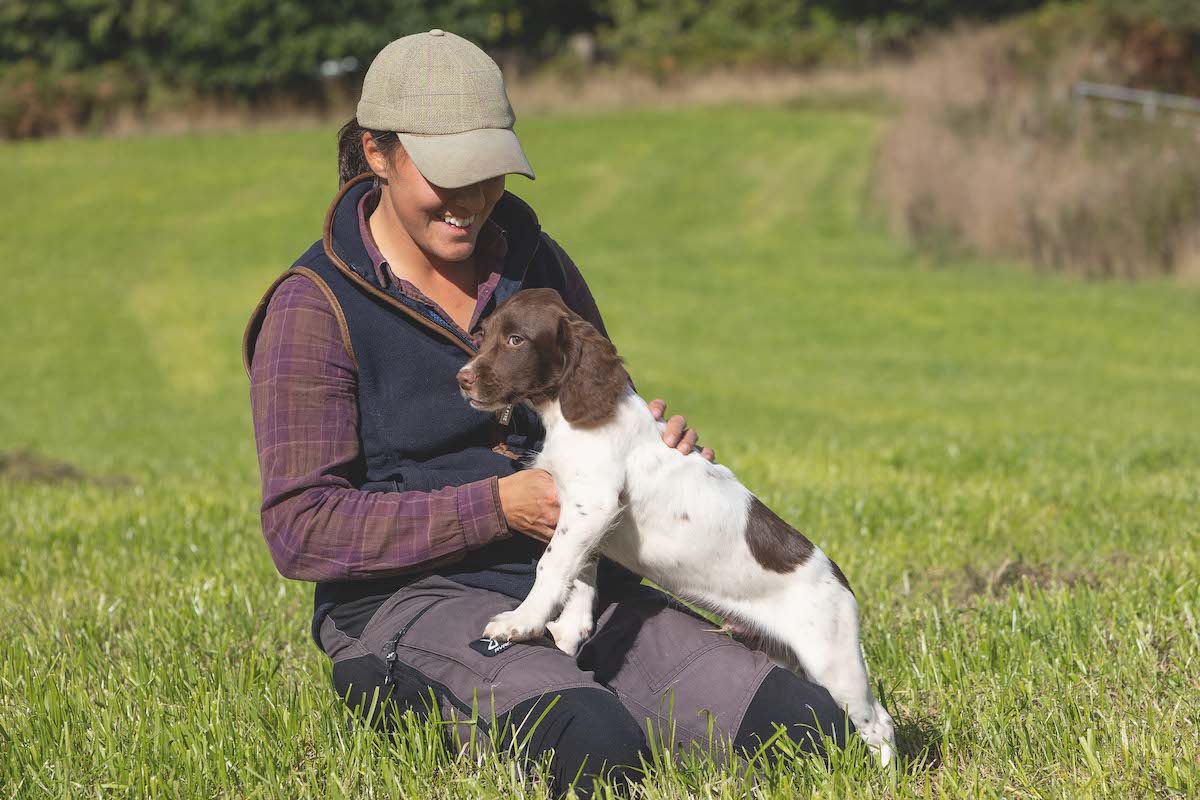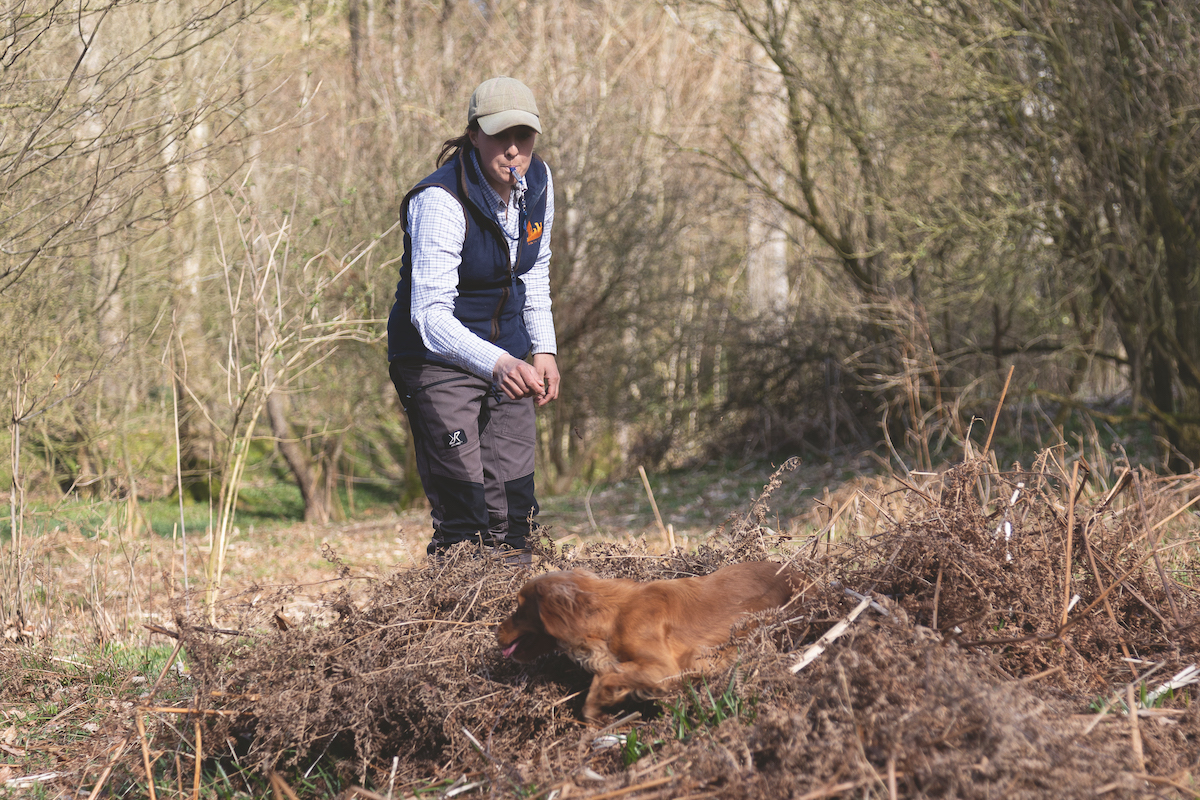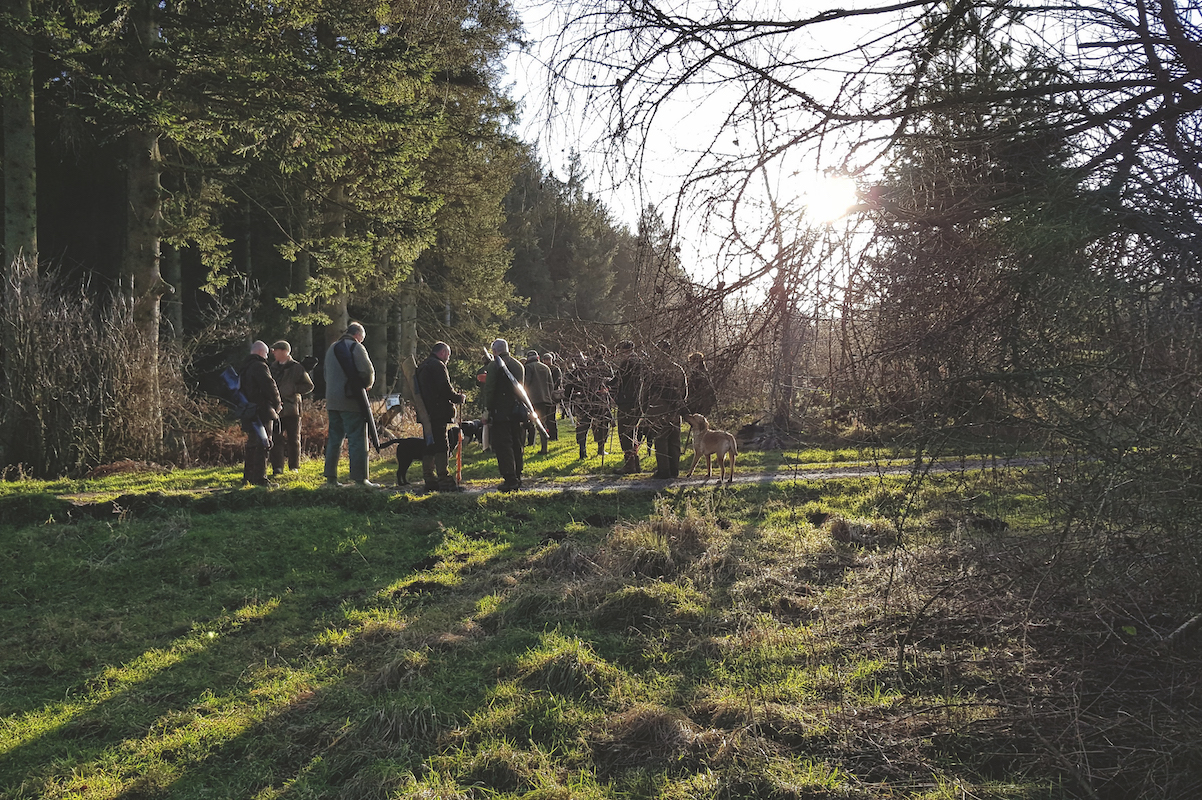What’s the first thing you should do with a new gundog puppy?
Fran Ardley outlines some firm foundations for your pup’s training without overdoing it

Fran emphasises the importance of bonding with the pup first
As spring approaches, many people will be thinking about getting new gundog puppy, which may be their first. I am regularly asked by novice trainers what they should be doing with their new puppy.
New gundog puppy? Give it time
It is not so much what you should be doing but more a case of what you shouldn’t be doing. Too many people think they should be cracking on with training as soon as they get their puppy. They forget that at just eight weeks old it will need plenty of time to settle into its new home.
Once the puppy has settled in, you need to ensure it gets to experience the big wide world. If you plan to train your puppy to work in the shooting field, you do not want it to associate every dog it sees as a playmate.
This behaviour can be developed unwittingly by puppy socialisation classes.
Another thing I tend to control is the amount of exercise the pups have. I hear of too many people taking young dogs out for long walks in an effort to tire them out, but the ligaments and joints cannot take the strain of a lot of exercise, so in the early days it’s better to use your garden. (Read did we make a mistake getting a working cocker?)
Most professional trainers will not begin any formal training until a pup is around six to seven months old, and even that can depend on the breed and personality of the dog. As I often say, they are all different. That said, there is plenty that can be done in the early stages to prepare the foundations for the future. Here are some of the ways.

Gundogs need to have their retrieving instinct honed from a young age
Bonding
I would suggest that the most important thing you can do with your new gundog puppy is to build a solid bond with it. You must become the centre of that little dog’s world. I cannot emphasise enough how important this is. I spend a lot of time just talking, sitting and playing with a new pup. I want it to realise that all good things come from me. Building up this bond is even more important if you have more than one dog, and you must make the effort to spend plenty of individual time with a puppy. If you fail to build a strong bond, it will be tested to the limit when the pup starts to take more notice of its surroundings. The challenge is that you have to be more exciting than the grass, the hedge line or the numerous other external stimuli that will be competing with you.
Lead on
There is a train of thought that you should hold off putting a lead on a spaniel for as long as possible, in case it restricts their drive. That’s OK if you can pile your dogs in a car, drive them to a fellside and let them out, but for most people getting a lead on a pup is one of the first things that they need to do. I have found that once the pup is really happy on the place board, it is a relatively painless exercise to gradually introduce a lead. (Read how to teach a dog to walk on the lead.)
Initially I use treats to distract the pup. Don’t be in too much of a hurry to start walking your new gundog puppy; let it get used to having the lead around its neck first.

It’s vital to train a dog to adjust to a lead during the early stages
Retrieving
Nearly all our gundogs will be expected to retrieve at some point, and instilling a strong retrieving instinct into a pup is something I like to build from an early age. This is especially important in the hunting breeds, where the quest for finding game can overtake the desire to bring it back to the handler. At this early stage it is important to make it a game, and to never be too quick to take the ball or dummy back from the puppy; don’t overdo things, as the puppy will quickly tire and get bored – always leave it wanting more.

Fran makes sure the pup enjoys the board to help her with the basics
The place board
I am an advocate of using a place board for teaching the basics – sit, stay and even recall. I have found that I can begin this early conditioning even with a young pup. If you are a regular reader, you will have seen in previous articles how I introduce the board. I want the pup to realise that only good things occur when they are on the place board. I prefer a style where the pup wants to be sat on the board rather than being forced to do so. I have found that this method helps to give a pup a really good foundation ready for proper training when it is a bit older.








